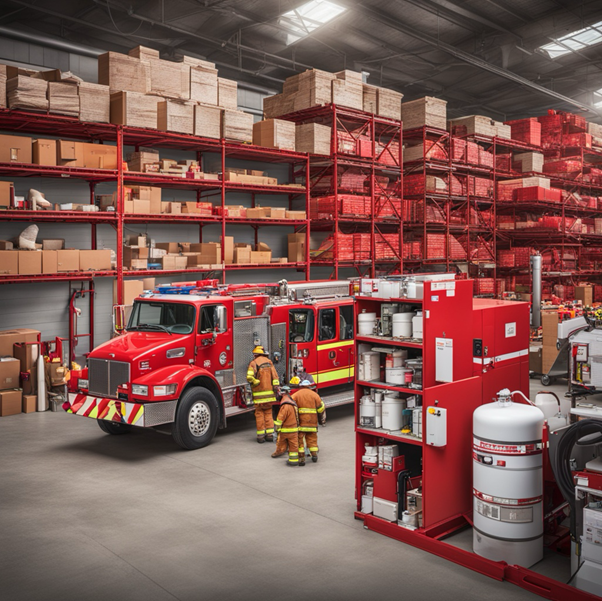
Warehouses and manufacturing plants are critical components of the global supply chain and industrial production. These facilities often house large inventories of materials, complex machinery, and a workforce that operates around the clock. However, they also pose a significant risk when it comes to fire hazards due to the nature of stored goods, flammable substances, and heavy electrical usage. Implementing robust fire safety strategies is not only a legal requirement but also essential for protecting lives, assets, and business continuity.
The Importance of Fire Safety
Fires in industrial settings can have devastating consequences. Beyond the immediate danger to human life, fire incidents can result in massive property damage, loss of inventory, halted production, and long-term reputational harm. According to data from the National Fire Protection Association (NFPA), industrial properties rank among the top sectors for fire-related losses. As such, a well-planned and regularly updated fire safety program is essential for any warehouse or manufacturing plant.
Common Causes of Fire in Industrial Facilities
Understanding the root causes of fires in industrial environments helps in designing effective preventive measures. Some of the most common causes include:
- Electrical Failures
Overloaded circuits, faulty wiring, and aging equipment are leading causes of electrical fires. In facilities that run on high-powered machinery, the risk is amplified. - Combustible Materials
Warehouses often store highly flammable materials such as chemicals, paper, textiles, and packaging. Improper storage or handling of these materials can lead to fire outbreaks. - Hot Work Operations
Processes like welding, grinding, and cutting generate sparks and high temperatures, which can ignite nearby flammable substances if not properly managed. - Mechanical Friction and Overheating
Machinery that is poorly maintained can overheat or generate sparks, particularly if there is a buildup of combustible dust or lubricant leakage. - Human Error and Negligence
Simple mistakes such as improper disposal of smoking materials, failure to turn off equipment, or blocking fire exits can escalate into serious fire events.
Fire Safety Regulations and Compliance
Fire safety in industrial facilities is governed by local, national, and international codes. In the U.S., the Occupational Safety and Health Administration (OSHA) and NFPA provide the framework for fire safety standards. International equivalents include the International Building Code (IBC) and ISO 45001. Compliance includes:
- Installing proper fire detection and suppression systems.
- Conducting regular fire risk assessments.
- Keeping exits and escape routes clearly marked and unobstructed.
- Ensuring staff are trained in fire prevention and response.
Essential Components of a Fire Safety Plan
A comprehensive fire safety plan must address both prevention and response. Key components include:
- Risk Assessment
Regular fire risk assessments help identify vulnerable areas and determine the appropriate level of fire protection required. These assessments should account for the layout, materials stored, types of equipment used, and occupancy levels. - Fire Detection and Alarm Systems
Early detection saves lives and limits damage. Smoke detectors, heat detectors, and manual alarm pull stations should be strategically installed and regularly tested. - Fire Suppression Systems
Depending on the nature of the goods stored or produced, facilities may need:- Sprinkler systems for general coverage.
- Foam systems for flammable liquid storage.
- Gas-based systems for areas with sensitive electronic equipment.
- Emergency Evacuation Plan
Clearly defined escape routes, emergency exits, and assembly points are crucial. Regular fire drills should be conducted to ensure all personnel are familiar with evacuation procedures. - Fire Extinguishers and Firefighting Equipment
Fire extinguishers must be readily accessible, clearly labeled, and suited to the types of fires that may occur (Class A, B, C, etc.). Staff should be trained in proper usage. - Staff Training and Fire Wardens
Employees should receive training on fire risks, how to use fire equipment, and evacuation procedures. Designating trained fire wardens adds a layer of leadership and coordination during emergencies.
Storage Best Practices to Minimize Fire Risk
How materials are stored can significantly influence fire risk:
- Keep flammable materials away from ignition sources.
- Use fire-resistant shelving and storage units.
- Maintain clear aisles for easy movement and emergency access.
- Limit vertical stacking to prevent tipping and aid fire suppression.
- Use appropriate labeling and Material Safety Data Sheets (MSDS) for hazardous materials.
Technology and Innovation in Fire Safety
Recent technological advancements are improving fire safety in industrial settings:
- Thermal imaging cameras for early detection of overheating equipment.
- Smart fire alarm systems integrated with building management systems.
- AI-powered surveillance systems that detect smoke or flame anomalies in real time.
- Wireless sensor networks for continuous monitoring of temperature, gas levels, and air quality.
Post-Fire Response and Recovery
In the unfortunate event of a fire, a prompt and effective response can reduce long-term damage:
- Incident Investigation: Identify the root cause to prevent recurrence.
- Insurance Assessment: Work with insurers to assess losses and file claims.
- Business Continuity Plan: Ensure backup facilities and systems are ready to maintain operations.
- Employee Support: Provide psychological support and clear communication to affected staff.
Conclusion
Fire safety in warehouses and manufacturing plants is a complex but essential responsibility. It requires a blend of proactive prevention, robust infrastructure, informed training, and ongoing vigilance. Investing in fire safety not only safeguards human life but also protects the vital economic engine of industrial operations. Organizations that prioritize fire safety are better equipped to handle emergencies, maintain productivity, and uphold their reputations in the face of unexpected challenges.
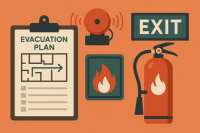
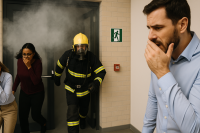
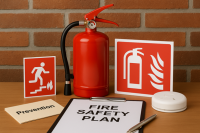
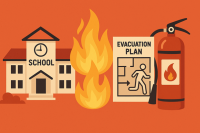
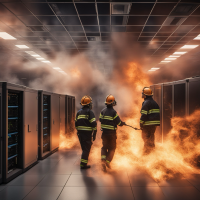
Leave A Comment